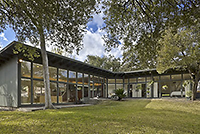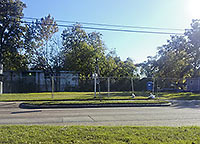Thanks to the efforts of a research physicist, Houston neighborhoods seeking relief from encroaching McMansions and towering townhomes may soon be able to defend themselves with weapons ordinarily popular only among high-school geeks. UH professor Mark Sterling appears to have succeeded in getting fellow members of the Planning & Development department’s Neighborhood Preservation subcommittee to walk around some tony neighborhoods wielding a device he built in his Heights garage: a plastic protractor mounted on a surveyor’s tripod.
Sterling’s voluntary neighborhood-by-neighborhood height and width restrictions are a proposed expansion of the recently revised lot-line and lot-size protection program. Residents of a street could decide they want to apply for the restrictions after holding amateur surveying block parties.
Other tools enlisted by Sterling in his grand proposal for neighborhood height and width limits: chalk, a computer and spreadsheet, and a tape measure. It’s easy:
To calculate height plane, starting 6 feet above the center of the street, residents would measure the diagonal angle from that point to the visual top of a house.
This is not necessarily the tallest point of a house, but the height of the tallest point of the majority of the roof line or, in the case of a triangular roof, the midsection of the triangle.
If residents on a block face decide they want height plane protection, they would again determine the height plane of the house that is the first to fall within the 70th percentile of all homes on the block face by measuring each houses’ height plane and adding them up, smallest to largest, in a spreadsheet.
The height plane angle that is the first to cross the 70th percentile would become the highest mark at which future homes could be built. [emphasis added]
- More ordinances eyed for homes [Houston Chronicle]



